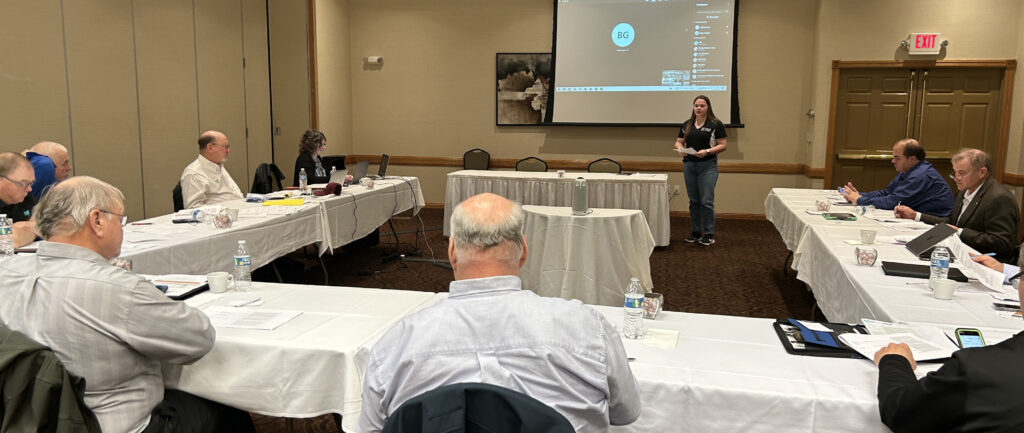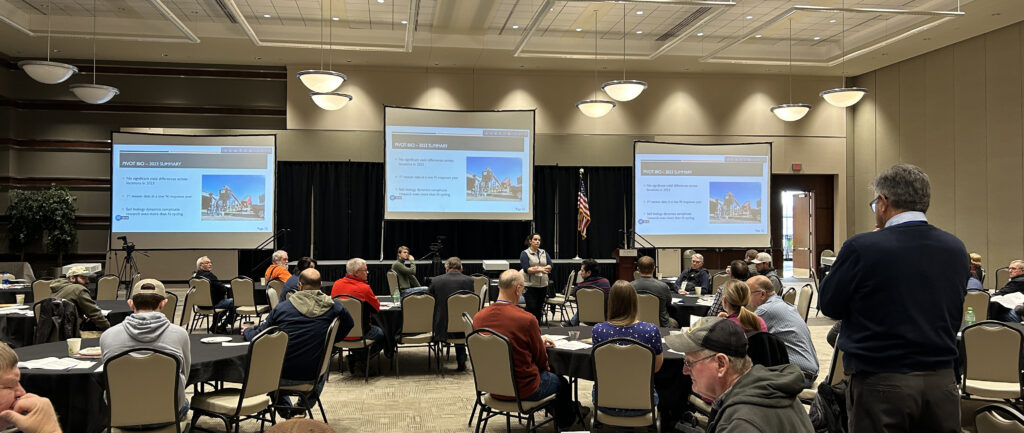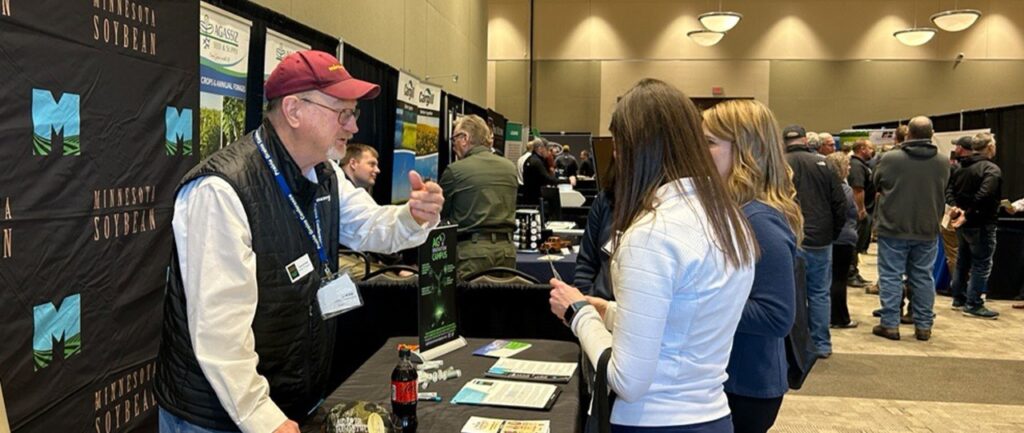On Thursdays, typically around lunch, I have a habit of checking the Drought monitor just to get a handle on what is going on. At this time, about 40 percent of the state is in abnormally dry (initial stages of drought) and 0.17 percent is designated as moderate drought (far western Traverse County).
Upon further exploration, (http://droughtmonitor.unl.edu/SupplementalInfo/Forecasts.aspx) they predict a warmer than normal summer and early fall, with equal chances (EC) of your choice of rainfall amounts (below, normal or above average precipitation) during the same time frame. This brings up the question, what do these predictions mean for soybean production? So I emailed a few colleagues and got a variety of answers.
Dr. Dean Malvick, University of Minnesota plant pathologist, responded with his comments:
- The areas with rain over the past week or two on emerging soybeans will be favorable for SDS if rains come routinely throughout the summer. SDS doesn’t develop fully if soil gets very dry in late July and August.
- Average to above average rain in June to mid-August will thus favor SDS, as well as white mold, and Brown Stem Rot.
- Those areas with excessive rain and saturated soils may start seeing Phytophthora rot.
- If drought develops, charcoal rot and pod and stem blight may become problems.
Dr. Bob Koch, University of Minnesota Extension entomologist, responded with the following thoughts:
“Soybean aphids: Soybean aphids generally don’t do well under high temperatures. Laboratory studies exposing aphids to constant temperatures have shown that temperatures above 90°F are stressful to soybean aphids. However, translating this to aphid population growth in the field is complicated by the facts that temperatures fluctuate throughout the day and temperatures within the soybean canopy may differ from the above-canopy air temperature. Therefore, you should not assume that high summer temperatures will stop aphid population growth.
- Two spotted spider mites: If conditions turn hot and dry (drought) be on the lookout for spider mites. Their reproductive rates increase under high temperatures, and dry conditions favor them by suppressing fungal diseases of the mites, among other factors.”
“I try really hard to not give long-term projections around soybean production,” says Dr. Seth Naeve, University of Minnesota soybean agronomist. “These predictions are essentially, universally wrong.
“We are concluding a big study now that shows that even when we have all of the retrospective weather data for a site, we were unable to predict when inputs would have helped to produce increased yields. It indicates to me, that even if we had a relatively good guess about upcoming weather – it wouldn’t do us much good.
“We do know that (lack of) heat and water are our primary yield limiters. We need both to maximize yields. So, if we KNEW that we’d have heat, then we’d be half way there.”
My own thoughts reflect my experience with the Drought Monitor. They are pretty good at predicting things like drought, so I expect we will see our soybeans accumulate enough heat units to optimize growth. My broken AC this weekend seemed to emphasize that possibility.
The Equal Chance (EC) literally means, “don’t get me to telling lies.”
I suspect soil moisture levels will be strongly affected by local thundershowers. As I tour soybean fields, it appears plant populations are approaching optimal in many locations. This means come late July, with the anticipated heat, transpiration rates will be high and soil water holding capacity may be tested. Disease and insect pressures will be highly variable due to the combined heat and variable humidity. This all translates into a need for a solid scouting plan to be in place and allocating your resource wisely.
It looks like an interesting season is headed our way.







